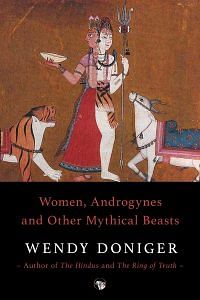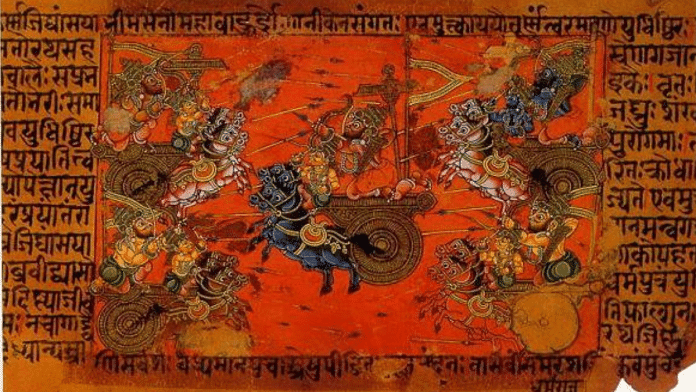In non-Indian religions, a saint is usually someone who, born as an apparently normal human being, develops special powers, often at a very early age, and, much later, is canonized. In the classical Indian texts this could never happen, for reasons that this chapter will set forth; yet, in the late medieval period, we begin to have local stories of saints who fit the non-Indian pattern with which we are familiar, saints such as Caitanya, Kabir, and many of the Virasaivas.
The pattern of relationship between man (or woman) and god in classical texts had to undergo certain fundamental changes in order to accommodate these hagiographies, and those changes were to have a profound effect on attitudes toward mortals who sought direct contact with gods or with goddesses.
In the ancient mythological texts, a kind of apparent hagiography appears at a very early period in tales of the great ascetic (tapasvin) who, though born as a normal human being (and often, though not always, of a good Brahmin family-Visvamitra is certainly a notable exception- but never, to my knowledge, of an outcaste or even Sudra family), develops superhuman powers and becomes not a saint but a god; he rises to heaven and joins the immortals. Only on the most superficial level can such a person be regarded as a saint; his life lacks the crucial element of spiritual enlightenment (often sudden, though sometimes gradual) and the secondary but usual element of proselytizing or founding an order that is generally characteristic of the saint. These Indian ascetics are after power, not goodness-and they are after it for their own use; they win something, but they do not grow into anything; they possess something new, but who they are does not become something new. They exist in “nontime” or “collapsed time.”
Also read: Buddhist viharas were sites of business. They weren’t just ‘monasteries’
This mythological pattern is crucial to an understanding of later hagiography. The idea of nondevelopment remains basic to the texts, and, in addition to this, a negative line of development begins. From the time of the Brahma, as on, the texts begin to state that serious difficulties arise when a man becomes a god. A sacrificer may win heaven by means of the sacrifice, but it is essential for him to come back from heaven, or else he will go mad; he must touch the earth again to remain human.
In the Mahabharata, the ascetic poses a different kind of threat, but a threat nevertheless: he violates caste lines. For he changes from one category to another-a transition strongly opposed by the orthodox tradition of svabhiiva and svakarma, the doctrine that one must perform throughout one’s lifetime the duties appropriate to one’s nature, which is defined by the group into which one is born. In terms of Mary Douglas’s paradigm, the rising ascetic becomes “dirt”; that is, he is out of place, out of order; he fits no category. And in the Hindu paradigm he is polluted and polluting.
In Tulu mythology, too, when an individual is possessed (and hence becomes supernatural) it is because “fundamental categories of the universe are disrupted”; that is, the taking-on of supernatural qualities is a reaction against the mixing of categories, not a cause of it. In the Bhagavad Gita, mixes his categories in the other direction (the god becomes incarnate as a mortal) when forces of good and evil are imbalanced. In all of these cases the transition from mortal to immortal or the reverse is accompanied by a dangerous disruption of order.
Indian tradition abounds in stories about such transgressors of boundaries, not only sages but kings with spiritual ambitions, like King Nahu and his son Yayati. Yayati’s ambivalence is graphically expressed by the statement that he actually remained suspended for some time between heaven and earth while the gods tried to figure out what to do about him. So too, when King Trisariku tried to enter heaven, a compromise was reached whereby he remained suspended as a constellation in the sky (head downward, significantly).
Also read: If Ghaggar was Saraswati, then Harappans were Rig Vedic people. Answer is in migrant memories
That these figures are often kings is, I think, relevant to the fact that the two greatest saints of the ancient period the Buddha and Mahavira, the Jina are said to have been born in royal families. These figures pose problems, for when a man becomes like a god in India, there are only two possible resolutions: either he must be made to cease being godlike (i.e., he must be corrupted and reduced to his appropriate mortal impotence-the occasion for numerous ribald tales of seduction and trickery), or he must be actually changed into a god- he must “become an Indra”. This latter solution produces further problems in the pre-bhakti period, where the belief that there really ought to be only one Indra at a time is subscribed to by the gods in general (and by Indra in particular); the metaphor of too many suns in the sky is often invoked at these times, and Indra himself (when challenged by Nahu a or Yayati or Trisaiiku) goes off and sulks in a lotus pond until he is restored to his rightful place. For this reason, the first pattern (seduction and corruption) prevails in the early texts, though the second (deification) becomes favored in the bhakti texts.
It is easy enough to see the social motivation for the earlier pattern: the Brahmin authors of the texts were appalled at the thought of losing their monopoly in two simultaneous ways by individuals treading their own paths of spiritual power without paying priests to intercede on their behalf, and by a few particularly gifted individuals actually leading mass defections from the ranks of Hindu orthodoxy to the fast-growing communities of Buddhists, Jainas, Ajivakas, and similar riffraff. To nip this movement in the bud, they produced moral tales that depicted the path to heaven as a one-way street: it was impossible to move up (in this life), but it was certainly possible to move down, fast, if one were so foolish as to attempt to engage in spiritual activities above one’s station. There are many stories of whole castes who fell in this way.
This one-way street led to other models of human development, made possible by the karmic loophole: it was indeed possible to move up in the next life if one adopted a Looking-Glass pace of spiritual activity- running as fast as one could in order to stay in the same place (in this life). More important, however, it was possible to explain apparent upward mobility in this life in terms of true downward mobility in a previous life. This mobility functioned on the social as well as on the individual and mythological level. A caste could “Sanskritize” itself and appear to rise; but if one knew the truth (it was explained), the caste was merely finally scrambling back to the spot from which it had fallen centuries ago. For a holy man, too, this was the only explanation: he must be merely regaining the heights (heaven) from which he had previously fallen because of some unknown sin (the karmic loophole).
If, in the ancient Indian context, it was a bad thing, a dangerous, antisocial, disruptive change, for a man to become a saint, how, then, does the mythology deal with the lives of actual saints-that is, with the great historical figures, such as the Buddha, Mahavira, and Sankara? They cannot be allowed to straddle the categories of man and god any more than the mythical figures could. The answer is that they are made into gods, by invoking karma to make it all come out even. They are treated like gods pretending to be men; in effect, they are made into avatars. In this view, saints are born saints; they do not achieve sainthood or have sainthood thrust upon them. They are revealed as having been saints all along (or, rather, gods).
Also read: Creating a unified Sikh identity— why women have unisex names and the ‘Kaur’ surname
The traditional Hindu belief that at birth one already contains in nuce all the possibilities that time will reveal prevents the pre-bhakti gods from having any true life-stories; Krsna’s childhood is first given attention when he makes the transition from epic hero-god to bhakti God, and even then he is not really a baby, as his miraculous deeds make clear. This attitude also made it impossible for the myth of Indra’s “infancy” in the Vedas to have any currency in post-Vedic mythology (W. N. Brown 1950) or for Visnu or Siva ever to grow up. It is often said that the gods are all twenty-two years old forever, a sybaritic but not particularly challenging fate. Similarly, when the life-stories of the saints begin to be revised, the hagiographers deny them the possibility of a truly human development; there can be no classical Indian hagiographic Bildungsroman.
 This excerpt from Wendry Doniger’s ‘Women Androgynous and other mythical beasts’ has been published with permission from Speaking Tiger.
This excerpt from Wendry Doniger’s ‘Women Androgynous and other mythical beasts’ has been published with permission from Speaking Tiger.



